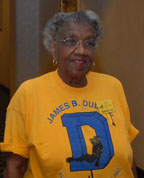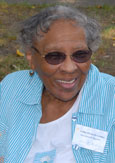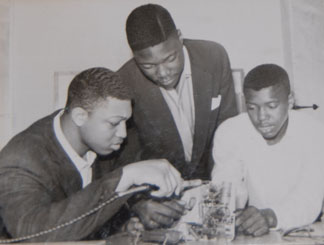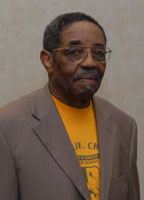

Curricular Experimentation “The task of the Secondary School Study was to find means by which the curricular offerings of black high schools could be influenced by accepted educational practices that had enriched other school curricula but which were practically unknown in most black schools.” W. H. Brown & W. A. Robinson, Serving Negro Schools: A Report on the Secondary School Study (1946) |
|||||||||||||||||||||||||||||
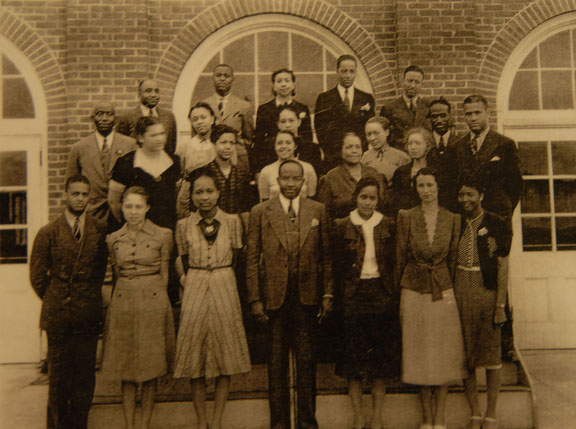 |
|||||||||||||||||||||||||||||
This photograph, with the title "Dudley Teachers Plan Experiment," appeared in the June 29, 1940 edition of the Norfolk New Journal and Guide: |
|||||||||||||||||||||||||||||
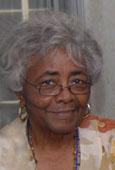 Helen Smith |
|||||||||||||||||||||||||||||
“These were dedicated teachers who truly cared about us even if we didn’t get our homework completed—they still cared.” Helen Smith |
|||||||||||||||||||||||||||||
|
|||||||||||||||||||||||||||||
“The teachers allowed us to feel comfortable with ideas. If there was something we did not understand, we always feel free to stop by and talk to a teacher. They allowed us to feel free to think through ideas. We were never afraid to ask them for help. There was a togetherness among teachers and students. And much of this was instilled by Dr. Tarpley’s school conventions - - - ‘family gatherings’ - - where we would come together for a fireside chat and talk and explore ideas.” Bernice Clark Brown |
|||||||||||||||||||||||||||||
“Cooperation” became emblematic for the entire effort as faculty within the member schools were placed together in settings where they could begin to formulate purposes and plans for educational change. Furthering the Progressive Education Association’s belief in “democracy as a way of life,” cooperative-planning became a tangible practice that served to build community and foster democracy. Secondary School Study participants believed “that better education meant broader opportunities for intelligent participation in and responsibility for democratic living.” As John Dewey had asserted, “Democracy must be reborn with each generation, and education is its midwife.” Dudley High School administrators referred to their use of democracy and “cooperative practices” as defining components of their school philosophy. |
|||||||||||||||||||||||||||||
|
|||||||||||||||||||||||||||||
“The teachers taught us to speak our mind and be part of a democracy where we could explore ideas. There was a sense of ‘cooperative learning’.” |
|||||||||||||||||||||||||||||
 Prof. McLean with students. Often mentioned during 2007 inteviews as one of the most beloved Dudley High School teachers, N. E. McLean taught mathematics. |
|||||||||||||||||||||||||||||
In 1942, Dr. Tarpley submitted the following description that later appeared in the Secondary School Study news bulletin, To and From Our Schools (Vol. 1, No. 2) |
|||||||||||||||||||||||||||||
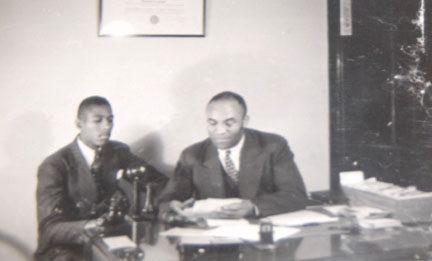 |
|||||||||||||||||||||||||||||
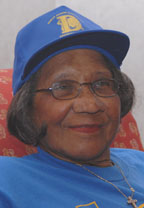 Almetha Clark Gilbert |
|||||||||||||||||||||||||||||
“We received used books but we were not second class citizens. In spite of the torn pages and used items, we still became first class in many areas because of the foundation that was provided to us by our teachers. It was a struggle for the teachers to prepare us for the challenges we had to face. But we came out on top.” Almetha Clark Gilbert |
|||||||||||||||||||||||||||||
|
|||||||||||||||||||||||||||||
| William Brown, associate director of the Secondary School Study, described an experimental core group of teachers at Dudley High School who were engaged in curriculum development as a form of teacher cooperation “such as a science teacher working with an English teacher to improve the reading and writing in a given class, or conscious efforts on the part of several teachers in the school to explore with pupils the number concepts or number relationships in courses other than mathematics courses.” | |||||||||||||||||||||||||||||
Such curricular planning, discussed by Brown in the 1943 Journal of Negro Education, permeated the Study as an effort to correlate the traditional subjects into a core curriculum, i.e., to draw out connections among the individual subjects as they were taught in their respective classes. While the “project method,” a common progressive education instructional practice of the time, was employed in many classrooms, the curriculum still remained focused upon academic knowledge. This conception of core curriculum was discussed during oral history interviews in 2007. |
|||||||||||||||||||||||||||||
“Dr. Tarpley held students to high standards. The curriculum was formed as a connected core. Math and music teachers correlated the curriculum along with the science teacher. I recall preparing music that connected to science.” |
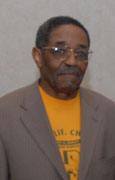 William Skelton |
||||||||||||||||||||||||||||
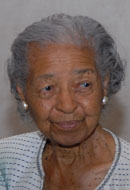 Ida F. Jenkins |
|||||||||||||||||||||||||||||
| “We worked on projects together with the English teacher which was especially nice since I had a masters in English as well as in history. We all planned together while developing our curriculum units and teaching plans. If an English teacher gave a writing assignment, the topic would be integrated with historical themes, and my assignments in history were graded by an English teacher. The physical education teachers and music teachers were involved, too; they coordinated their topics with history. We all worked together.” Ida Jenkins | |||||||||||||||||||||||||||||
Audio-Visual Program |
|||||||||||||||||||||||||||||
|
“Dr. Tarpley had a sense of fairness and treated teachers and students fairly. He didn’t coddle or threaten us (although we knew that he could blow the roof off, but he controlled it). He recognized that we knew our jobs and we did them . . . and we enjoyed doing the work. Dr. Tarpley asked teachers for only that which was fair and did not ask for any more, knowing that he would get less from us. He didn’t play games, and we didn’t play games. We stood behind him as teachers, and he stood behind us.” |
||||||||||||||||||||||||||||
“The teachers would exchange outlines and would know what topics could be coordinated. Students were receiving knowledge in more than one direction and, because of the connections, the curriculum became more meaningful for them. I don’t think educators are doing that any more. There was a connection with the students and teachers at Dudley High School. Children are wonderful and we stopped and listened. They knew when there is a connection, and they knew that we cared.” Ida Jenkins |
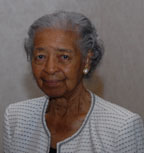 Ida F. Jenkins |
||||||||||||||||||||||||||||
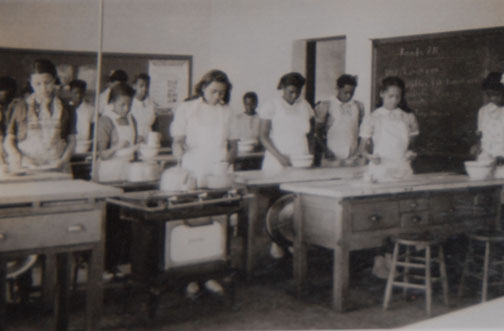 |
|||||||||||||||||||||||||||||
FROM SECONDARY SCHOOL STUDY CATALOG (circa 1940) "School Wide Health Program: The promotion of healthful living is a time-honored objective in practically every school. Schools approach this objective through a wide variety of different activities but it is unusual to find a school which can furnish definite and organized evidences which indicate the extent to which its health activities result in improved pupil and community health. Thorough physical examinations of all students are made and follow-ups where needed. A cumulative health record is kept for each student. Each student attends weekly class in hygiene and class informal gymnastics." It should be noted that Vance Chavis was awarded a General Education Board Fellowship for 1946-1947 to study public health education. Other Secondary School Study participants, including the co-directors, William Robinson and William Brown, also participated in this Rockefeller Foundation-sponsored program. |
|||||||||||||||||||||||||||||
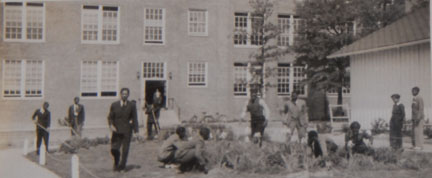 |
|||||||||||||||||||||||||||||
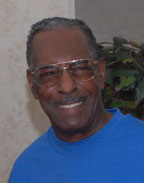 James H. Kesler |
“The teachers treated us like family; they treated us like we were their child. The schools weren’t so overcrowded and the teachers took time with individual students. We loved Dudley, and we loved our teachers.” |
||||||||||||||||||||||||||||

an institutional member of the International Coalition of Sites of Conscience
Museumofed@gmail.com

